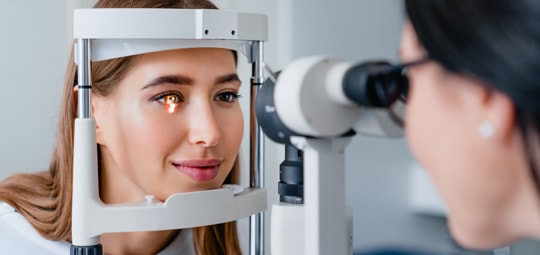What Do We Look for
During an Eye Exam?
Every eye exam begins with a conversation about you. By getting to know your history, we can monitor your eyes for possible signs of inherited diseases or illnesses. This conversation also gives us unique insight into your particular eye care needs, like your lifestyle or workplace needs.
Your eyesight is always checked during an eye exam, and your prescription is updated so you can continue to enjoy crystal clear vision. While this test includes an eye chart, we also measure your corneal curvature. The cornea determines how the light entering your eyes bends (refracts) to reach the retina. We measure your cornea, record your vision, and recommend the best options available.
An eye exam also includes a test for binocular vision and an assessment of the strength of your eye muscles to ensure your eyes are working as a team. Eye teaming is essential for ensuring the 2 separate images your eyes see are successfully fused into one understandable image for your brain.
Most importantly, a comprehensive eye exam includes a series of tests that look for various eye diseases and other health conditions using our industry-leading ophthalmic technology.
The Aging Eye
Your eyes undergo various changes as you age. While some changes are more serious than others, if you’re over 65, annual eye exams ensure these changes are documented and monitored as you get older.
Some common eye conditions and diseases we look for in older eyes include:
- Presbyopia: A refractive error that nearly everyone develops. Presbyopia occurs when the eye’s lens loses its flexibility, making it difficult to focus on nearby objects.
- Age-Related Macular Degeneration (AMD): An eye disease that occurs when the eye’s macula degrades with age, leading to central vision loss.
- Cataracts: The clouding of the eye’s natural lens that commonly occurs with age. Nearly half of all Americans over 80 have or had cataracts.
- Dry Eyes: An eye condition that develops when there’s a lack of tear production or tears of poor quality. Dry eyes can occur as part of the aging process.
- Glaucoma: A group of eye diseases associated with damage to the optic nerve. It can develop at any age but is more common in older adults. It’s also one of the leading causes of blindness in those over 60.










